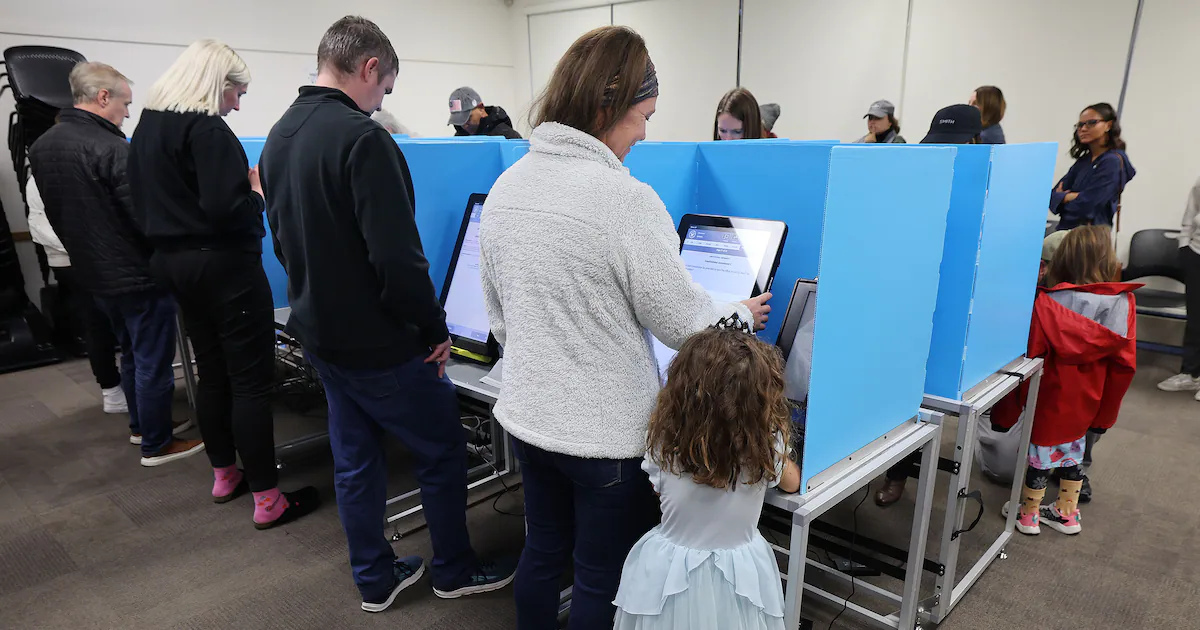
Utah’s courts are unequivocal. Voters passed Proposition 4 in 2018, and that will change the way state lawmakers draw political maps — specifically, the maps that delineate the state’s four House districts.
The consistent message from the courts in recent years has been that the state constitution allows citizens, collectively, to make law through initiatives, and that the results of initiative elections carry weight. If these alter or reform state government, the Legislature may not change them. A state Supreme Court ruling last year said lawmakers may, however, alter or change other types of initiatives.
The balance between elected representatives and the collective voice of the people is a delicate and sometimes confusing one. Representatives have the time and the charge to make informed votes based on study, research and experience. The legislative process includes hearings and amendments that refine legislation. Their work constitutes the very definition of a republic. But the state constitution also grants the people the power to pass law through initiatives.
While we anticipate that the “alter or reform” requirement may be refined as future initiatives are considered and challenged, the court held that the redrawing of political boundaries does fall under that definition.
Proposition 4
Lawmakers had changed the intent of Proposition 4, passed by a narrow majority in 2018, and ignored the map drawn by the independent commission the proposition set up. Now the state’s adopted map, which was used for the 2022 and ‘24 elections, has been ruled inadequate and lawmakers must start all over, passing a new map by Nov. 10.
It’s a complicated process, but the procedure, which de-emphasizes raw politics, could bear some useful results.
Utah’s congressional map is considered by some to have been gerrymandered — that is, drawn in such a way as to benefit one party (in this case Republicans) over all others.
Communities of interest
Frankly, it’s difficult to draw maps that could create a “safe” Democratic House district in Utah. And the intent of creating districts should focus not on preserving any specific party, but on fair representation.
Proposition 4’s requirement for keeping communities of interest intact, for instance, would be a move toward fair representation, especially in areas with high concentrations of minorities.
“Communities of interest” can be hard to define.
Christopher Collard, senior analyst at the Utah Foundation, has done considerable research into whether rural parts of Utah like being lumped into congressional districts that include parts of the Wasatch Front. Republican leaders often tout the supposed benefits of having representatives who need to represent both rural and urban areas.
In 2020, Collard led a survey of city officials in small and medium counties who were asked to identify, on a map, four to six communities they felt were similar to their own.
Those from cities in small counties selected 88% communities from similarly small counties. Significantly, they chose none from along the Wasatch Front. Those from mid-sized counties chose only 4% from the Wasatch Front.
Those from Wasatch Front communities, on the other hand, chose 60% other Wasatch Front communities, and the rest from areas with a smaller population.
More directly, the survey then asked officials to identify a county they preferred to have in their congressional district and which one they preferred not to have. The small county folks all chose other small counties to be in their district, and 70% identified a Wasatch Front county as a disfavored county. Those in mid-sized counties responded roughly the same.
By contrast, 88% of officials from Wasatch Front counties chose another Wasatch Front county as favorable.
By email, Collard told us that, among those who picked a Wasatch Front county as disfavorable, 70% of the time it was Salt Lake County specifically.
“Smaller communities in Utah don’t want to be in the same district as the Wasatch Front — especially not Salt Lake County,” he said.
Smaller counties could be said to have a community of interest with other small counties, then.
Dividing Salt Lake County
Of course, it’s virtually impossible not to divide some parts of Salt Lake County. Its population of 1.2 million is roughly 400,000 larger than the target size for a congressional district. Also, it’s numerically impossible to draw a congressional district containing only sparsely populated rural counties. But this research highlights the need to be genuine and careful in defining and identifying communities of interest.
Proposition 4 also requires maps to be geographically compact and contiguous. They should follow natural geographic boundaries, barriers and fixtures.
The maps are to avoid partisan bias. That appearance can be tricky in a state so dominated by one party.
The latest voter registration figure, published Sept. 15, showed registered Democrats make up 283,872 people, By comparison, each congressional district must contain just under 820,000 total people of all ages.
Utah has 1,024,797 registered GOP voters, which is a strong majority. An additional 591,560 voters are unaffiliated.
Competitive districts
Writing for the Brennan Center for Justice, Michael Li and Chris Leaverton noted that districts are becoming less and less competitive nationwide.
“Candidates elected in these districts then have little incentive to woo moderate voters in campaigning or legislating, further increasing the House’s partisan polarization,” they said.
However, if done correctly the exercise of redrawing districts without emphasizing political advantage as the main goal could be a refreshing change for Utah. It might restore faith in the voting process among many who traditionally don’t vote, particularly if they feel a sense of equity in their representation.



